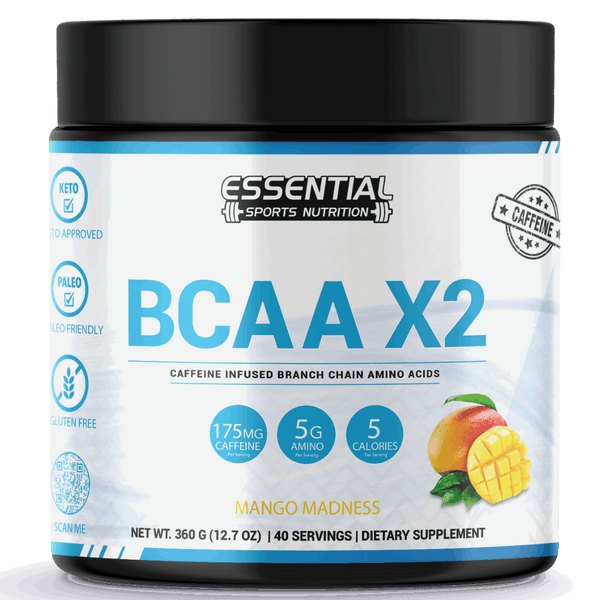Best Back Exercises for Building Muscle and Strength
Imagine you're a desk-bound office worker who's just started incorporating deadlifts into your weekly routine. You're aware that this powerful exercise can revolutionize your back strength and overall posture. Yet, you've also heard that if not executed properly, it could lead to more harm than good. As a seasoned fitness professional, I can assure you that the key to a resilient and injury-free back lies in a carefully curated set of exercises, attention to form, and an understanding of the underlying anatomy. You might be wondering how to strike the right balance between pushing your limits and ensuring safety. Stick around, and I'll unravel the complexities of back training, guiding you through techniques that fortify without putting you at risk for strain or injury.

Key Takeaways
-
Back exercises strengthen back muscles and reduce the risk of injury.
-
Strong back muscles improve posture and alleviate discomfort from slouching.
-
Back exercises enhance core strength and grip strength.
-
Proper form and technique are essential for injury prevention during back exercises.
Essential Back Anatomy

While you may not see them, the latissimus dorsi, trapezius, erector spinae, and rhomboids are key muscles in your back that play a pivotal role in maintaining strength, stability, and correct posture. These muscles form an integral part of your entire posterior chain, which is essential for everyday movements and athletic performance.
The latissimus dorsi, or 'lats,' are large, flat muscles that help control the movement of your shoulders. Strengthening these can significantly improve upper back strength and contribute to a well-defined back. Meanwhile, your trapezius muscles extend from the neck to the mid-back, aiding in upper- and mid-back muscle development as well as shoulder and neck mobility.
Lower back pain is often a result of weak erector spinae, which runs along your spine. These muscles are crucial for maintaining an upright posture and need to be targeted through specific exercises to build strength and muscle mass. Compound exercises, which engage multiple muscle groups, are particularly effective at exercising these targets, ensuring a balanced development of back muscles.
Understanding this anatomy helps you design a targeted exercise routine that enhances back strength, reduces the risk of injury, and improves overall fitness.
Importance of Back Training

Understanding the key muscles in your back sets the stage for recognizing why strengthening them through targeted training is critical for spinal support and injury prevention. Training your back isn't just about aesthetics; it's a fundamental aspect of maintaining a healthy and functional body. The best back exercises are those that strengthen multiple muscle groups simultaneously, including the deltoids, trapezius, latissimus dorsi, rhomboids, and erector spinae.
Incorporating back training into your routine can reduce the risk of injury by fortifying the muscles that support your spine. This is especially important during physical activities where the risk of strain or sprain is heightened. Moreover, strong back muscles improve posture, which in turn can alleviate discomfort caused by slouching and can promote better breathing and digestion.
Back exercises that support core strength are pivotal, as a stable core is the foundation for nearly all movement. Furthermore, many back exercises enhance grip strength due to the nature of gripping weights, which is beneficial for various sports and daily tasks.
Utilizing compound movements that target upper back muscles ensures a comprehensive workout. These exercises not only sculpt your body but also contribute to a well-rounded strength profile, poised to tackle life's physical challenges with resilience.
Warming Up for Back Workouts
Before diving into the core of your back workout, it's crucial to properly warm up with a combination of cardiovascular activity and dynamic stretches to ensure your muscles are prepped and your risk of injury is minimized. Start with 5-10 minutes of moderate cardio, such as brisk walking or cycling. This initial step raises your body temperature and increases blood flow, which is key for a safe and effective exercise session.
Next, transition to a 5-minute dynamic stretching routine. Physical therapists often recommend stretches that mimic the movements of your back workout, thus specifically preparing your back muscles for the tasks ahead. Try incorporating movements such as arm circles and torso twists that actively engage and stretch your upper and lower back.
To further activate your upper back muscles and support shoulder health, utilize resistance band exercises like pull-apart. This exercise also helps maintain a back straight posture by reinforcing proper alignment and engagement of your core muscles.
For targeted back extension work, use an exercise ball to perform back extensions. This engages not just your back, but also your core and glutes, offering a comprehensive warm-up. Finally, incorporating suspension trainer exercises, such as suspended rows, can enhance the stability and readiness of various back muscles for a more intense workout to follow.
Top Strengthening Exercises

As you progress through your back exercise routine, it's crucial to integrate core stability workouts to fortify the muscles that support your spine. Incorporating progressive resistance training with tools like resistance bands or weights can systematically increase muscle strength in your upper and lower back. These approaches are backed by research to not only enhance back function but also to mitigate the risk of future strain or injury.
Core Stability Workouts
To build a solid foundation for your spine and enhance overall posture, incorporating core stability workouts into your exercise regimen is essential. Begin with the plank position; this exercise is great for engaging your core and glutes. Ensure your body weight is evenly distributed and that you squeeze your glutes to maintain alignment. This helps keep your spine neutral, avoiding undue stress.
Adding a resistance band can amplify the challenge. Try a renegade row to work both core stability and upper back muscles. Position yourself in a plank, hold the band in each hand, and alternate pulling one arm back while keeping the rest of your body still. This exercise not only strengthens your core but also engages multiple stabilizer muscles, making it a comprehensive workout.
Progressive Resistance Training
If you're looking to take your back strength to the next level, progressive resistance training (PRT) is a methodical approach that involves incrementally increasing the load to effectively challenge and build the muscles in your back. Here are three top strengthening exercises for PRT:
-
Barbell Row: Grip the bar with an overhand grip, pull the bar towards your lower chest, and squeeze your shoulder blades together.
-
Lat Pulldown/Seated Cable Row: For lat pulldowns, use a wide grip and pull the bar down in front of you, whereas for seated cable rows, pull towards your waist.
-
Single-arm Dumbbell Row/Resistance Bands: Either pull a dumbbell with one arm, keeping your back straight, or use resistance bands to mimic rowing movements.
Techniques for Injury Prevention
To prevent back injuries during exercise, it's essential to maintain proper lifting form; keep your back straight, bend at the knees, and lift with your legs, not your back. You should also focus on strengthening your core muscles, as a strong core supports your spine and can significantly reduce the strain on your back. Incorporate exercises like planks and dead bugs into your routine to build core stability and protect your back during other workouts.
Proper Lifting Form
Mastering proper lifting forms is essential to prevent injuries when engaging in back exercises or handling heavy objects in everyday activities. Here's how you can ensure you're lifting correctly:
-
Starting Position: Stand with your feet flat on the floor, hip-width apart. Keep your back straight and pull your shoulder blades together.
-
The Lift: Hinge at the hips, not the waist, with knees bent. As you prepare to lift, keep your core engaged to support your spine.
-
Executing the Movement: As you lift, make sure to form a straight line from your head to your pelvis. Lift using your legs, slowly lower the weight if needed, and always keep your shoulder blades back to maintain a strong posture.
Strengthening Core Muscles
Building a strong core is crucial for injury prevention and enhances the stability and strength of your back during both exercise and daily activities. Strengthening your core involves targeting multiple muscle groups, including your lower back, hips, glutes, and hamstrings. Here's a practical guide to some core-strengthening exercises:
| Exercise | Starting Position & Reps |
|---|---|
| Resistance Band Pull-Apart | Stand with feet shoulder-width, band in hands, 1-2 sets of 15-20 reps |
| Lat Pulldown | Seated or standing with band/machine, 1-3 sets of 8-12 reps |
| Wood Chop | Stand with feet hip-width, weight in hands, 1-3 sets of 8-12 reps on each side |
| Good Morning | Stand, hands behind head, begin without weight, focus on form |
Each exercise contributes to a solid foundation, fortifying your torso and enhancing overall back health.
Enhancing Flexibility and Mobility

Enhancing your back's flexibility and mobility requires a multifaceted approach, starting with a comprehensive warm-up that includes a brief cardio session and dynamic stretches to prepare your muscles and joints for the exercises ahead. To get your back in top shape, consider the following:
-
Resistance Band Pull-Aparts: Stand with your feet flat on the floor, knees slightly bent. Hold a resistance band in front of you and extend your arms. Pull the band apart by moving your hands to the sides while squeezing your shoulder blades together. Aim for 1-2 sets of 15-20 reps to work the upper back muscles and improve shoulder health.
-
Back Extensions on an Exercise Ball: Position your hips on the ball, and feet against a wall or sturdy surface. Place your hands behind your head and lower your torso towards the floor. Engage your hamstrings and glutes to lift back to the starting position and repeat. This exercise targets back extensors and increases the range of motion.
-
Suspended Rows with a Suspension Trainer: Secure the trainer and hold the handles with your palms facing each other. Lean back with your feet flat on the floor, knees bent. Pull yourself up by drawing your elbows back and squeezing your shoulder blades together. Perform 1-3 sets of 8-12 reps to enhance flexibility and strengthen the back.
Structuring Your Back Routine
Warming up with a brief cardio session is a smart move before diving into your back exercises. It gets your muscles ready for action and reduces the chance of getting hurt. A mix of exercises that hit different muscles in your back will make sure your strength grows evenly.
Get going with resistance band pull-ups that work your upper back and shoulder blades. This move is a great setup for lots of upper-body exercises. To train your lats, try lat pulldowns. Pull the bar down steadily to work those muscles.
To target your lower back, hamstrings, and glutes, back extensions are your go-to. Do them with control, and try using an exercise ball to stay stable. Remember exercises like wood chops that exercise several muscles at once, including your core, shoulders, upper back, and arms.
Check out these exercises and the muscles they focus on:
Exercise Guide for a Stronger Back
-
Resistance Band Pull-Aparts: Upper Back, Shoulder Blades
-
Lat Pulldowns: Lats, Multiple Back Muscles
-
Back Extensions: Lower Back, Hamstrings, Glutes
-
Wood Chops: Core, Upper Body, Shoulders, Arms
-
Smith Machine Rows: Overall Back Development
Add these to your workout to make your back strong.
Remember to stay in tune with your body and adjust your routine as needed. A well-rounded back workout can help you build strength, improve posture, and reduce the risk of injury. Keep at it and your back will thank you!
Maximizing Back Exercise Benefits

To maximize the benefits of your back exercises, it's essential to start each session with a cardio warm-up and dynamic stretches that prime your muscles for the workload ahead. This preparation is key to improving muscle activation and reducing the risk of injury. When you're ready to target your back, consider these tactics:
-
Incorporate Resistance Training: Classic back exercises like resistance band pull-ups are great for increasing upper back strength. Aim for 1-2 sets of 15-20 reps, focusing on squeezing your shoulder blades together firmly.
-
Leverage Compound Movements: The lat pulldown is one of the best exercises for a comprehensive back workout. To pull the weight back effectively, perform 1-3 sets of 8-12 reps, ensuring to keep your back straight and core engaged.
-
Strengthen with Bodyweight: Back extensions on an exercise ball are a great exercise for targeting the lower back and core. Complete 1-3 sets to maintain a strong back and improve posture.
Each exercise contributes to maximizing back exercise benefits, from enhancing grip strength to developing a powerful posterior chain. Remember, the goal is to challenge your muscles while maintaining proper form to foster strength and prevent injury.
Strengthen Your Back FAQs:
Q: What are the best back exercises for building muscle and strength?
A: Some of the best back exercises include barbell rows, seated cable rows, pull-ups, lat pulldowns, deadlifts, and dumbbell rows.
Q: How can I train my back using dumbbells?
A: You can train your back using a pair of dumbbells by performing exercises like dumbbell rows, dumbbell pullovers, and single-arm dumbbell rows.
Q: What are the benefits of training your back?
A: Training your back can help improve posture, reduce the risk of injury, increase overall strength, and contribute to a balanced physique.
Q: What are some back training tips for muscle growth?
A: Focus on using proper form, vary your exercises, incorporate both pulling and rowing movements and ensure progressive overload to promote muscle growth in your back.
Q: How can I strengthen my lower back and ease lower back pain through exercise?
A: Exercising to strengthen the muscles in your lower back, such as with hyperextensions, deadlifts, and good mornings, can help alleviate lower back pain and improve overall stability.
Q: What are some key points to keep in mind while performing back exercises?
A: It's important to keep your back flat, and shoulders back, and engage your core throughout movements to effectively target the muscles in your back and minimize the risk of injury.
Q: What are the 15 best back exercises to include in a workout routine?
A: The 15 best back exercises for a comprehensive workout routine include pull-ups, barbell rows, seated cable rows, lat pulldowns, deadlifts, dumbbell rows, and hyperextensions.
Q: Which exercises can target the middle and lower muscles of the back?
A: Exercises such as reverse flies, bent-over rows, and hyperextensions are effective for targeting the middle and lower muscles of the back.
Q: How can I build and strengthen the muscles in my entire back?
A: To build and strengthen all the muscles in your back, incorporate a variety of exercises that target different areas, including the upper, middle, and lower back.
Q: What are the best back workouts to consider for muscle gain?
A: The best back workouts for muscle gain typically include a combination of compound movements like deadlifts and rows, as well as isolation exercises to fully engage the muscles of the back.
Other Frequently Asked Questions:
What Is the Best Exercise for Your Back?
Like a tree's roots are vital for stability, so is your back for overall health. The best exercise for you depends on your spinal anatomy and aims to achieve muscle balance and core stability. Incorporating flexibility training and posture correction, perhaps through yoga benefits or aquatic therapy, is essential. Using resistance bands can aid injury prevention, while weightlifting techniques enhance strength. Choose a routine that addresses these aspects for an optimal back workout.
What Are 3 Exercises to Avoid Lower Back Pain?
You should avoid certain activities to prevent lower back pain. Core strengthening is essential, but steer clear of moves that may strain your spine. Posture correction and yoga stretches can be beneficial. Opt for an ergonomic chair to maintain spinal alignment. Incorporate a stretching routine for flexibility. Additionally, an anti-inflammatory diet, pain management techniques, chiropractic care, and aquatic therapy can all support a healthy back by minimizing discomfort and promoting healing.
How Do I Start Back Day?
To kick off your workout, remember "slow and steady wins the race." Start with warm-up routines to prep your muscles. Select equipment that suits your level and plan exercise frequency to avoid overtraining. Mix grip variations for balanced strength and apply progressive overload principles. Posture importance can't be overstressed; it's crucial for effectiveness and safety. Incorporate rest intervals, seek spotter guidance when needed, focus on specific muscle groups, and don't skip stretching for recovery benefits.
How Do You Get a Nice Back?
To sculpt a nice back, focus on back anatomy and muscle symmetry with targeted strength progression. Good posture correction is essential, as is recognizing recovery importance. Incorporate flexibility training to prevent injury. Nutrition tips aid in fat loss, revealing toned muscles. Consistency is key; don't skip workouts. Vary equipment to challenge muscles differently. Remember, a comprehensive approach combining these elements will yield the best results for a well-defined back.
A Stronger Back
As the sturdy trunk anchors a mighty oak, your well-trained back forms the core of your physical vitality. Embrace the exercises that sculpt your body's natural pillar, for they are the silent sentinels guarding against the winds of strain and injury. Let each rep be a brick in the fortress of your spine, fortifying with evidence-based precision. Cultivate strength, flexibility, and balance—your back's symphony of power—and reap the bountiful harvest of health and resilience.




























